
A QSL for my reception of NDB AST on 325 via Enaire: informacion@enaire.es.
It is one of two beacons for Aeropuerto de Asturias in Northern Spain. The other one is AV-387 which I got confirmed earlier.
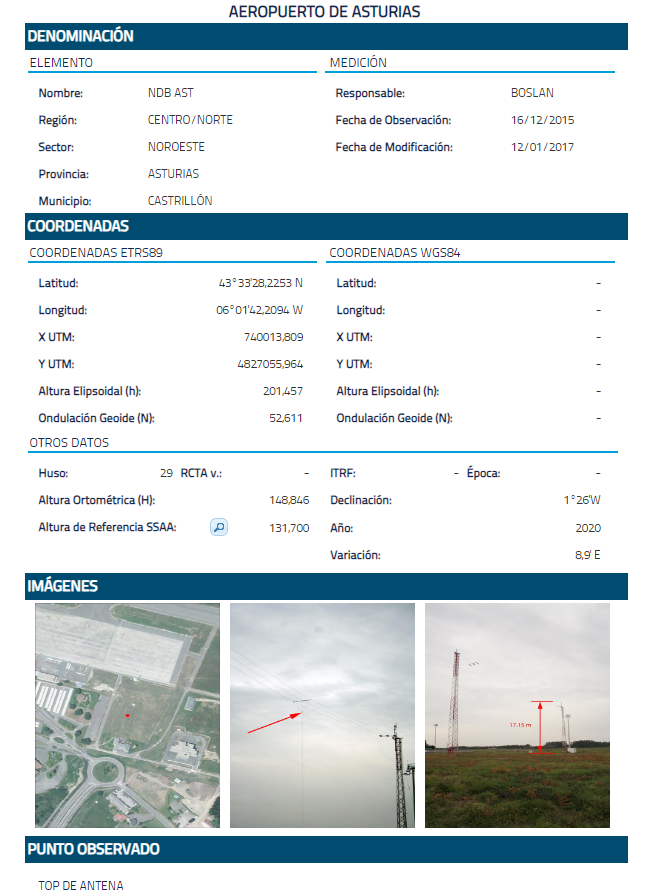
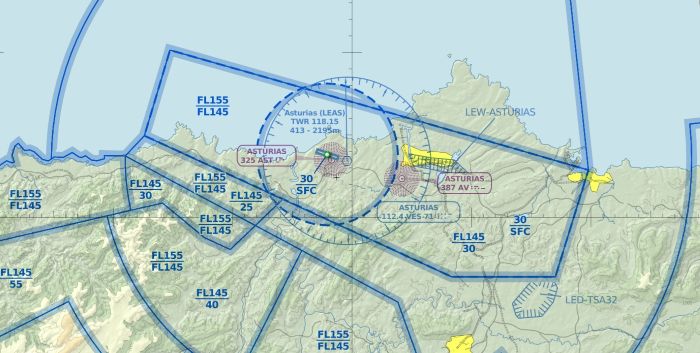


"It's not true I had nothing on, I had the radio on" - Marilyn Monroe
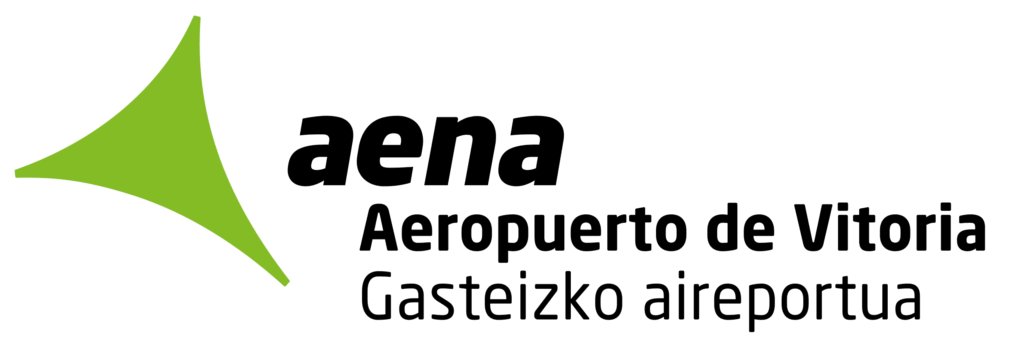
Enaire (informacion@enaire.es) was so kind to confirm another couple of beacons from Spain that I received. This time I heard NDB VT from Vitoria on 308 kHz. As usual they sent their nice information sheet:

NDB 308-VT is one of the two NDBs for Vitoria Airport. The other beacon is is 345-VTA. Below you can see how they nicely align with both sides of the runway. Both antennas have a set-up which is a bit different from most Enair beacons: a “Sistema radiante de tipo margarita” as opposed to most Enaire beacons that have a dipole: “Sistema radiante de tipo T”.



Ruqui is the nickname of Jordan Alcolea. I followed him on his DX blog RuquiDX already for quite some time. Here he posts about his radio receptions and QSLs.
But Jordan also has a radio program that runs on Channel 292, Radio Casanova and Wooferton: RuquiRadioAM. I heard him with a program with nice “Celta Folk Rock” and a German/Spanish ID:
Jordan answered my report to ruquiradioam@hotmail.com in 3 weeks with a very nice QSL:

You can find the schedule for the RuquiRadioAm upcoming broadcasts here. Big thanks to Jordan. After the famous Glenn Hauser he is probably the second DX-er which I heard with his own shortwave radio show.

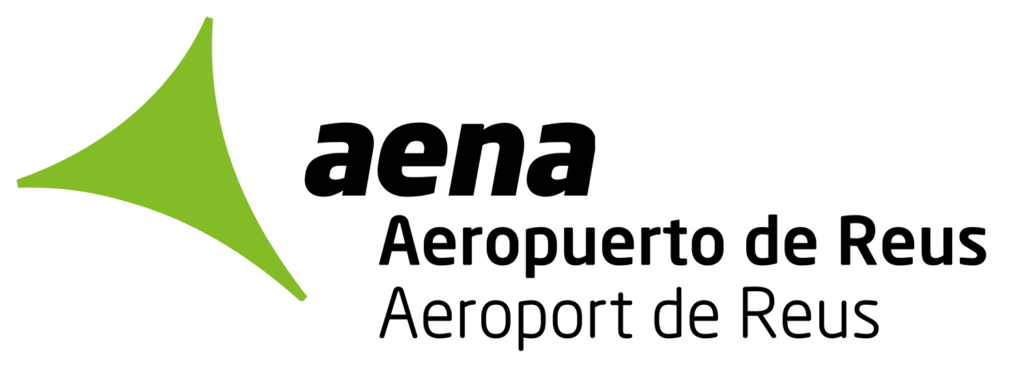
A QSL for NDB RUS operating on 424 kHz for Aeropuerto de Reus in Spain. Checking the statistics on NDB list this shouldn’t be a difficult catch. But despite receiving many Spanish NDBs, July this year was the first time I received RUS.
And my reception was far from perfect. In the Pskov recording I made you can see that the beacons was briefly visible with RUS in morse: .-. ..- …

Enaire was again so kind to confirm my report and included their usual data sheet. I sent my report to informacion@enaire.es .

Most flights from Reus Airport are seasonal, carried out by budget airlines like Ryanair and Jet2.com.


I write Lerida as the call sign of this beacons is LRD and it is know as Lerida, but the formal name of the city in Catalan is Lleida. The NDB LRD is operated and maintained by Enaire who verified my report with the usual fact sheet. It shows that it is one of the typical Sistema radiante de tipo T antennas fed by a 200 W transmitter.
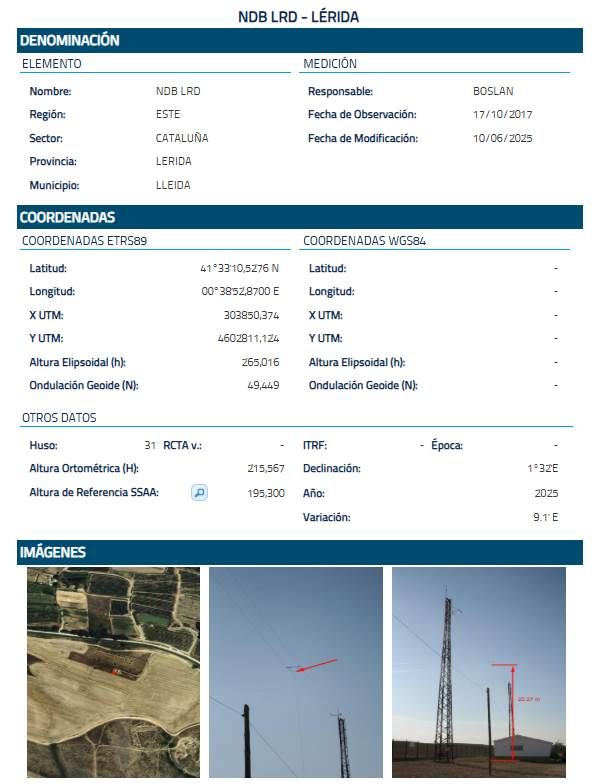
Now I’m not entirely sure if you can associate this beacon with Lleida-Alguaire Airport or not. But if so, while most of the NDBs from Spain I got confirmed were either associated with an Aena Airport or the military, Lleida-Alguaire airport is operated by Aeroports de Catalunya. It was constructed in 2010 by the Government of Catalunya at the cost of 130 million Euros.
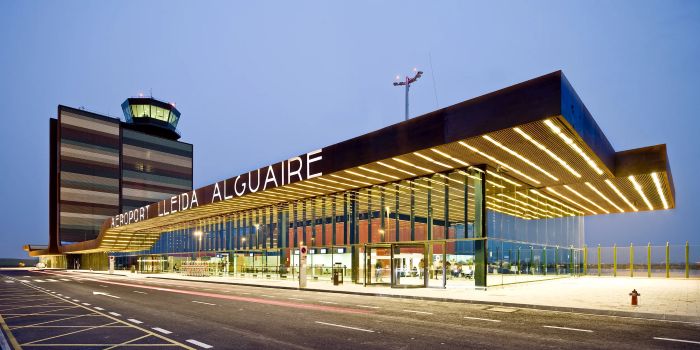
LRD is one of the Spanish beacons heard most easily at my QTH, and reported by European NDB listeners. But the airport seems to be less of a success though. Airnostrum seems to operate flights to Palma de Mallorca, Ibiza and Menorca. But that’s all. For that reason the airport seems to target “aeronautical services” today. That means niche businesses as flying schools, aircraft storage and maintenance services.


NDB SGO on 356 kHz is another typical ENAIRE beacon: 200 Watts in a “Sistema radiante de tipo T”: three horizontal wires between two towers. The navigational function is linked to Valencia Airport. The beacon is located in Canet d’en Berenguer, north of Valencia. I’m not an expert, but when I checked on flight radar I noticed that flights pass north of Valencia, making a U-turn to land in an easterly direction.
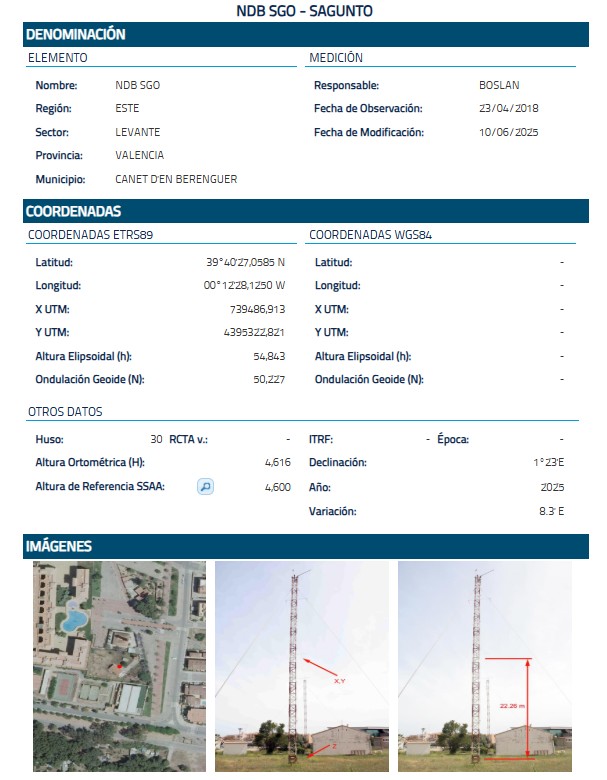
If search for the beacon on GoogleMaps you will see that it is a bit of a weird location, in front of a hotel and in right in the centre of a nice beach resort and yacht club. But I guess the beacon was already there when the development of the resort started around 2001.
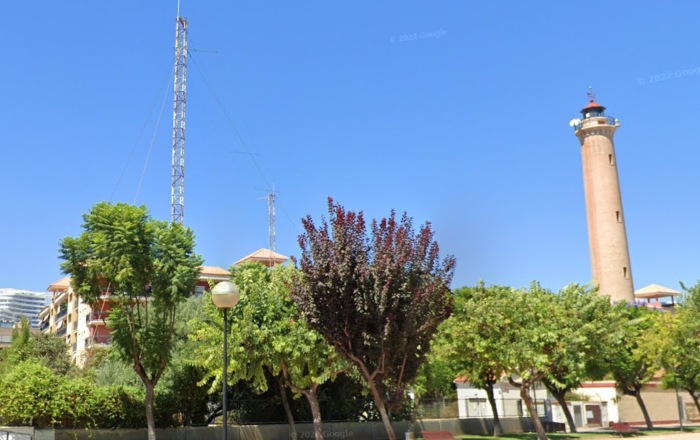
My report was confirmed via informacion@enaire.es .

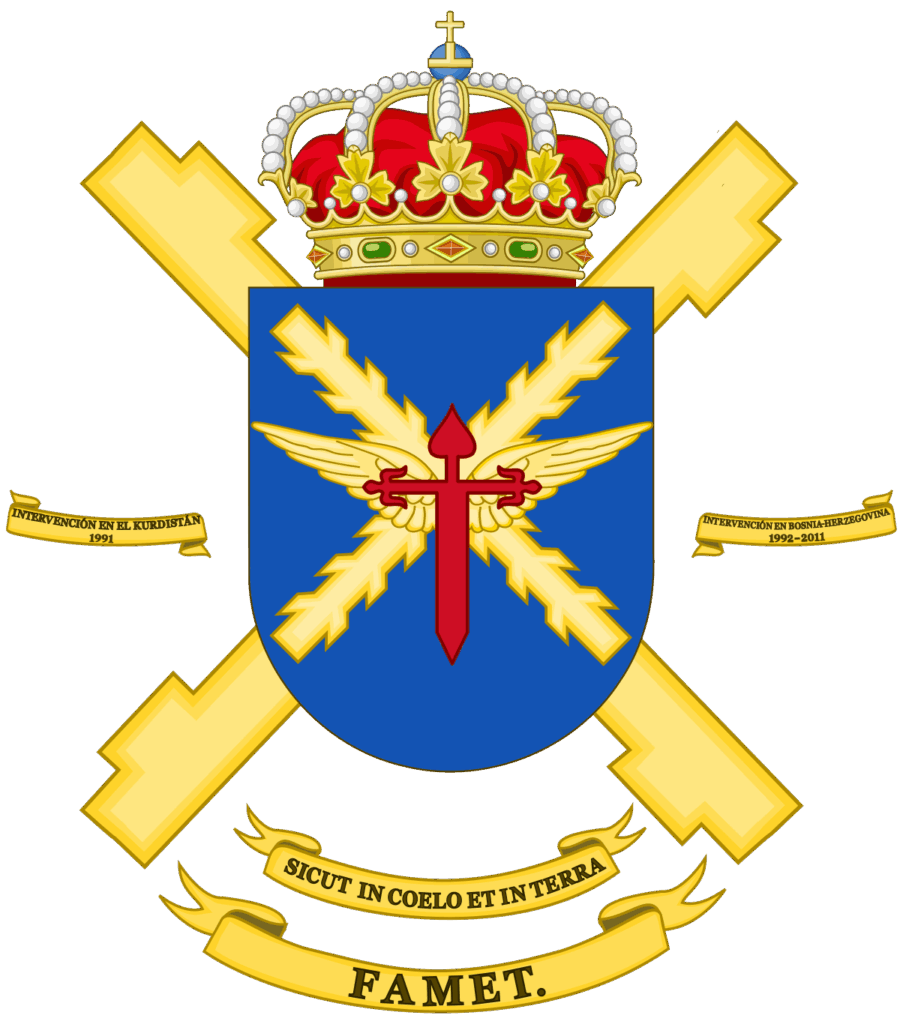
ENAIRE confirmed my reception of the NDB ECV-319 at Colmenar-Viejo airbase in Spain. This is the home of the Fuerzas Aeromóviles del Ejército de Tierra (FAMET), the Spanish Army Airmobile Forces. There are 4 helicopter batallions that have Colmenar-Viejo as their base, including BHELTRA V who fly Chinook (which is cool as my nephew and godson flies a Chinook as well).

I sent my report to informacion@enaire.es


QSL for NDB ZRZ Zaragoza on 389 kHz. A beacon with a strong signal, but somehow often compromised by QRM at my location. The ZRZ beacon is located 15 kms NW of Zaragoza Airport.
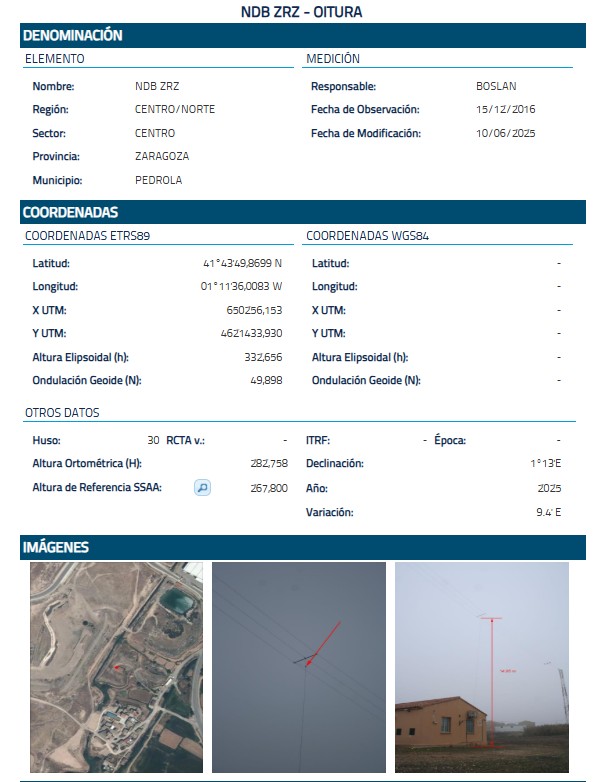
My report was confirmed by informacion@enaire.es .

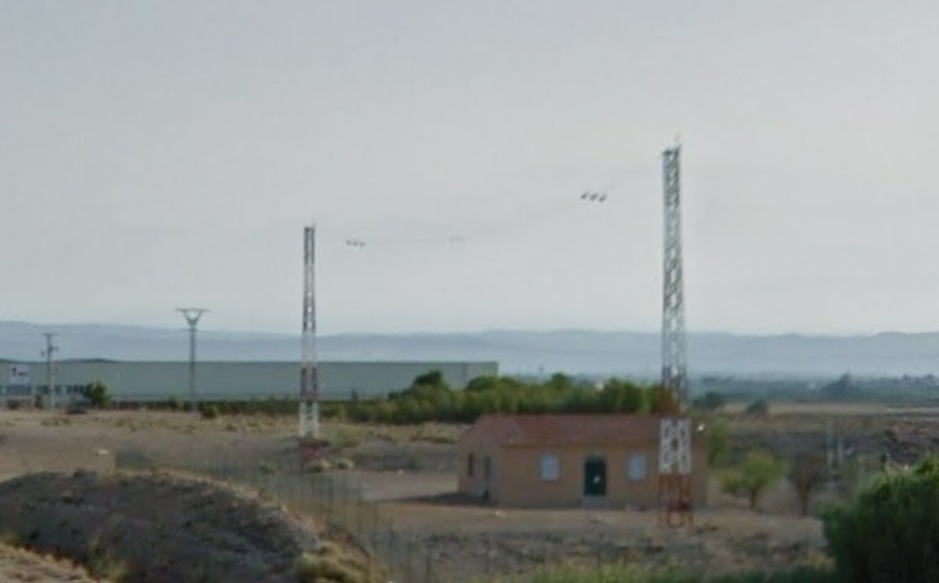
Zaragoza Airport history goes back to the Cold War. Constructed by the US it was one of three major USAF Cold War airbases in Spain. But what I didn’t know is that is was used as a Transoceanic Abort Landiing facility for Space Shuttle missions.


I picked up COPE Palencia during the sporadic E opening on July 20th with their local ID on 105.1 MHz. With 2 kW they are broadcasting from Monte Viejo to the south of the city of Palencia in Spain.
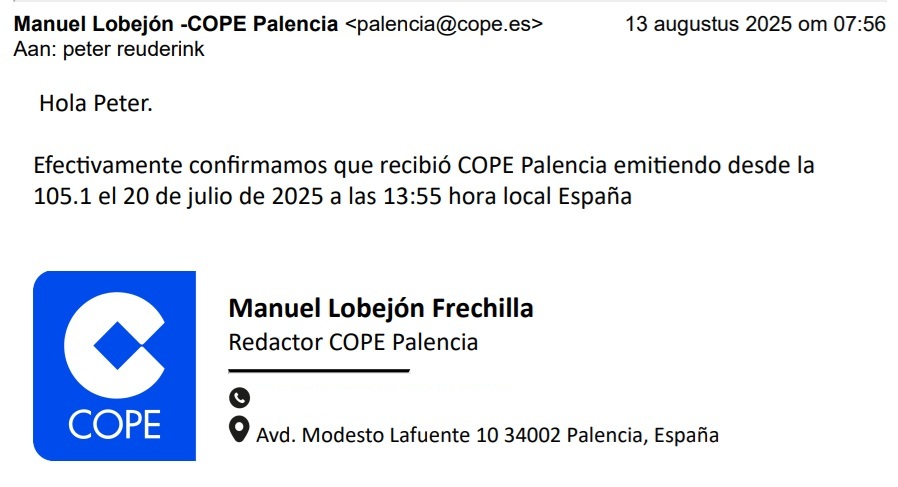
Manuel Lobejón, editor at COPE Palencia was so kind to reply with a fully detailed email confirming my reception. I sent my report to palencia@cope.es .
In the audio file you hear the annoucement of the network program “Fin de Semana” presented by Cristina Lópex Schlichting and the local ID.


Whereas it is always nice to hear and receive a QSL from a local outlet of one of the bigger networks in Spain, getting a smaller local radio station with a single transmitter confirmed is even more special.

During the very good Sporadic E opening on July 20th I received Radio Chinchilla, the local radio station for Chinchilla de Montearagón (Albacete) in Spain. They are broadcasting with 500 Watts and again I’m flabbergasted with the quality of the reception. During 20 minutes I was able to listen to a program called “The Story de Kylie Minogue”. Unfortunately they did fade out before I heard an ID:
My report to rchinformativos@gmail.com was confirmed with a brief email reply within a day:

Radio Chinchilla began broadcasting in December 1988. According to Wikipedia it has one of the highest audiences. Most of the programming it offers is self-produced, including news, music, sports, entertainment… It has its own news services and broadcasts 24 hours a day.
I didn’t know the small city of Chinchilla de Montearagón which has a population of 4600. But it is one of these beautiful Spanish towns with lots of history!
© 2026 Peter's DX Corner
Theme by Anders Noren — Up ↑